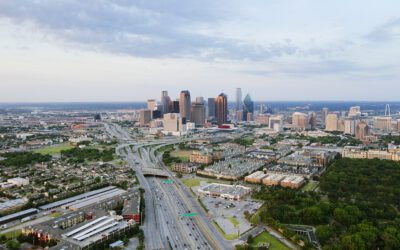Retail has now recovered since the global pandemic, posting occupancies in the high 90 percent range in Texas. Why? Because it has changed. Auto repair uses are now in retail centers; self-storage is a retail use; child related lessons, tutoring, and services have occupied empty spaces. The secret to the renaissance of retail has been in no longer overbuilding and making significant changes to operations and expectations.
People are realizing much more quickly how much the office has changed. Hopefully, some have learned lessons from the painful flameout of retail following the Great Recession.
The suburban markets across Texas and especially the Dallas-Fort Worth Metroplex were successful in the 1980s in waging a prolonged war against the urban core. Business shifted from proper downtowns just as residents fled urban public school whether from substandard education or culture wars. Upscale suburban communities dot the Metroplex and went from towns to cities.
Businesses addressed the desires of their employees by making their commute easier. Today, employees, especially younger ones, want their commute to be from their coffee pot to the desk.
There’s a place for office, but it’s not every day. Businesses are taking less and less space, slashing their costs and providing flex schedules to lure and retain employees.
Cities must change. Suburban office buildings risk being Blockbuster stores in a streaming age. The significant tax base provided by the office buildings is already slipping away. The sands are quickly running through the hourglass, and the cities that respond fastest to this change will prosper.
The CRE-NEXT team can act quickly to determine the best new use and work with cities to make that change happen. Our combined skills of brokerage, architecture, and zoning, permit expediting, and economic incentives allows for weaving together an intradisciplinary solution for distressed assets.
The signs of office demise were there before the pandemic. Real estate experts had worried about the future of office space well before the pandemic. As far back as 1989 Peter Drucker wrote, “Commuting to office work is obsolete.” The events of 2020, with the pandemic and Great Resignation, have accelerated the cycle.
In an effort to cut costs during the Great Recession, companies decreased footprint and went to an open space model with more employees per square foot. They also started to allow some employees to work from home. The trend was already in place.
Meanwhile, in the retail market, there was a significant pairing. Often initiated by municipalities, the policy, combined with few new builds, has made all the difference. Further, many retail buildings have been converted to other uses successfully.
Waiting is unlikely to yield strong results. All the precincts have counted their votes and it’s not looking good for office. A recent report from Research for Capital Economics predicts that office values will not return to pre-Covid levels until 2040. That’s a long time to wait on the sidelines.
Recently, the notion of first movers winning the market and gaining the greatest brand awareness, customer loyalty, and profit share has been challenged. Second movers have gained favor due to the setbacks of first movers like TiVo, Redbox, and Yahoo. These companies, once dominant, have been pushed aside by streaming services, Netflix, and Google.
Real estate, however, will still favor first movers. Office conversions are prudent. Those who act first will receive support from elected officials and find lenders more willing to listen. They will also have the opportunity to select the best sites.
Planning is about change over time. Zoning cases are about change right now to meet the market. Throughout my career, the only constant I have learned is that change should happen somewhere else. This vague location does not work well in the real world of real estate. Garnering support and understanding of municipal government will be required.
The CRE-NEXT team of professionals have significant experience navigating significant real estate tumult, resulting in positive change of stranded assets. We can fix your problem by creating change. Waiting is not an answer. Owners of broken retail assets sold their properties at steep discounts, only to allow others to make the profit.
Having trusted, experienced guides to navigate the technical aspects of redevelopment, zoning, permitting, economic incentives, and understanding the market is necessary.
The waves of change are going to continue. It’s best you find someone who knows how to surf and help you find the right wave.





